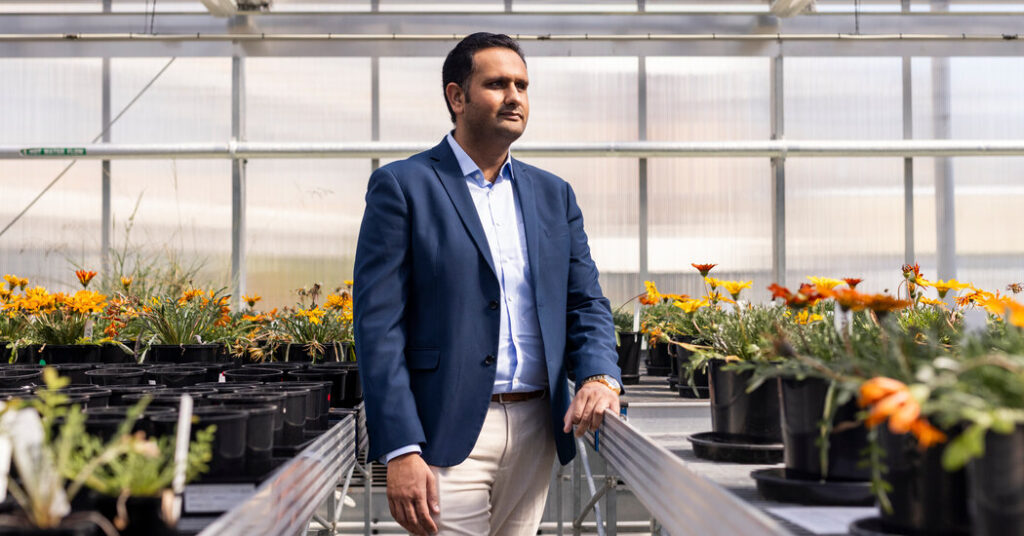When Ali Bajwa, who hails from Pakistan, decided to pursue a doctorate in agricultural science, Australia was his top choice. The country is known for its innovative research in this field, boasts highly ranked universities, and welcomes international students, with its overseas education sector often described as “the largest export we don’t mine.”
Ten years ago, Mr. Bajwa arrived with a focus on weed control and brought his family along, eventually becoming a naturalized citizen. He spent several years in Wagga Wagga, a rural community, working for the state government and continuing his research. He currently teaches at La Trobe University in Melbourne and owns a home.
However, those looking to take a similar route as Mr. Bajwa are facing a new situation.
Politicians from both major parties are now considering limits on the number of international students as a measure to combat the skyrocketing housing costs that are currently concerning voters ahead of next month’s elections. The rationale is that this will reduce the competition for rental properties and affordable homes, thus lowering prices. This marks a significant change for Australia, which, while its economy largely relies on mining, had previously viewed education as a “super growth sector” and aimed to attract students globally to compete with the U.S., U.K., and Canada.
“We gain far more from international students than we lose,” stated Mr. Bajwa, 35. “The focus should be on refining the criteria for selection rather than imposing strict limits.”
Last year, Prime Minister Anthony Albanese’s government attempted to set a cap on international student numbers but was unsuccessful in passing the legislation. Instead, they have increased student visa fees and slowed processing times, which has led to a decline in student arrivals. Opposition leader Peter Dutton is advocating for even stricter limits, proposing to reduce the number by another 30,000, capping total new arrivals at 240,000 per year, and significantly raising visa fees to as much as 5,000 Australian dollars (around $3,200).
The stringent border measures during the pandemic kept many international students out, but Australia later took steps to welcome them back by temporarily lifting work restrictions and offering visa fee rebates. This resulted in a record influx of students in 2023 and 2024, with international student enrollment exceeding one million for the first time last year.
In September, Mr. Dutton referred to students wishing to stay in Australia post-graduation as “the modern equivalent of boat arrivals,” implying a comparison to refugees and asylum seekers.
Australia has traditionally benefited from immigration, which has enriched its workforce and contributed to a younger demographic. Currently, about 30 percent of the population was born overseas, with nearly half having at least one parent born abroad.
Public opinion has shifted, a trend also seen in other countries. The U.S. is now scrutinizing and revoking student visas more harshly, viewing the right to study as a privilege that can be revoked at any moment; Canada is limiting international student entries; and the U.K. has implemented new rules aimed at preventing the misuse of student visas to work.
Australia had allowed, and even promoted, its major universities to rely on international students to enhance their campuses and research initiatives. International students typically pay significantly higher fees than local students, providing a crucial revenue stream for these institutions.
“International students in Australia have long functioned as a part of an export industry,” noted Peter Hurley, a professor of education policy at Victoria University. “Their importance is akin to that of the sheep industry in terms of national export.”
The post-pandemic boom in international student numbers has coincided with a severe housing affordability crisis, as home prices have skyrocketed about 45 percent since 2020. Sydney is now considered the second least-affordable city globally after Hong Kong, based on the ratio of median home prices to median incomes.
While various factors contribute to the shortage of housing—such as labor shortages, rising construction costs, and regulatory hurdles—international students have become an easy target for politicians looking for quick fixes.
This view was echoed during the first debate of the election cycle between Mr. Albanese from the Labor Party and Mr. Dutton from the Liberal Party.
A 74-year-old woman named Janine expressed concern for her children and grandchildren’s future home-buying prospects, stating, “We have many visiting students buying properties in our cities. When will our government realize that Australia should belong to Australians?”
Andrew Norton, a professor specializing in higher education policy at Monash Business School, noted that the influx of international students—many of whom wish to stay in Australia after completing their degrees—is indeed fueling housing demand.
However, he also mentioned that this current surge is an anomaly resulting from pent-up demand during the pandemic and a decrease in students returning home. He argued that proposed caps would serve merely as a short-term fix rather than the comprehensive migration policy reform that is truly necessary.
Critics have also highlighted that international students predominantly occupy apartments and shared houses close to universities, which are typically not the types of homes first-time buyers are looking for.
Clifford Suryana, a fourth-year law and commerce student from Surabaya, Indonesia, shared that he learned English from Australian teachers in his hometown. When it was time to choose a university, he felt a strong connection to Australia, believing there were business opportunities and diplomatic relationships with Indonesia that could benefit his career.
He noted that many of his fellow international students, who represent nearly half of the student population at the University of Sydney and contribute about four-fifths of tuition revenue, provide more for Australian society than they take.
“Most of them hope to work in Australia or return to their home countries enriched with the knowledge gained here,” he stated. “From my view, this is beneficial for Australia.”


